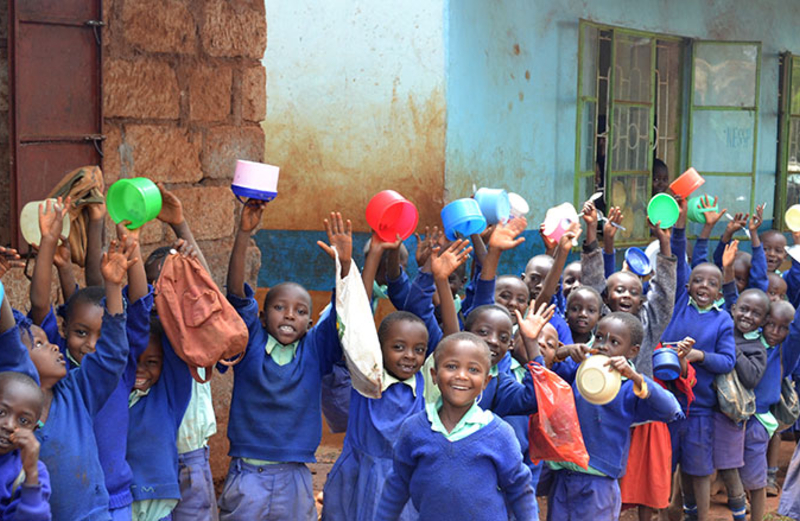School feeding programme in Botswana - focus on home grown green consumption (letlhafula)

Introduction: The Government of Botswana (GoB) recognizes the relevance and importance of food and Nutrition Security (FNS) and education as key to human development. This has been demonstrated by substantial budget allocation to education and nutrition specific Programmes over the years. The initiative has also led to the recent increase in the budget allocation of the Ministry of Agricultural Development and food Security that are aimed at enhancing food and nutrition security.
The School Feeding Programme (SFP) Initiative has been modified to include green produce consumption in public primary schools order to improve its effectiveness and efficiency in meeting broader nutrition and economic value to school going children and rural households.
The main objective of is to respond to challenges of malnutrition and hunger following sustained droughts that are endemic to the country.
The specific objectives of this expanded initiative on SFP is:
- To prevent children from feeding hungry during school days
- To provide children with a balanced diet
- To keep children in the school the whole day
- To improve school attendance and results
Stakeholders and partners: School children (vulnerable Population); local small holder farmers, local and central government authorities (Ministry of Local Government and Rural Development, Ministry of Health and Wellness, Ministry of Agricultural Development and Food Security, Ministry of Basic Education), development Partners (World Food Programme, SADC, African Union/NEPAD, UN), Donors
Implementation: Main activities involves the following:
- Procurement of green produce from local small holder farmers
- Making payments accrued to suppliers
Methodology: Consultation between local farmers, local and central authorities in supplying schools with green produce during Letlhafula. Key implementers and collaborators are those highlighted under stakeholders and partners.
The resource implications are expenditures increase as extra resources are needed to accommodate the new initiative of providing green produce to the SFP.
Results/Outputs: The following are the results of the initiative:
- School attendance and results has improved
- Nutrition status for school going children has improved
- Rural households income levels has improved due to farmers direct access to local school market
Validation: The Results of Drought and Household Vulnerability Analysis has indicated that the SFP has contributed to improvement in improved nutrition and school attendance and results in most of the public primary schools. The validation process involves stakeholder consultations and production of reports that are produced and presented to local and central authorities for appreciation and action.
Innovation and Success: The transition from procuring grains and imports to include procurement of local green agricultural produce for SFP is something that others could learn from. It has succeeded in diversifying the SFP menu as it has been suggested by some stakeholders in a previous case study supported by AU/NEPAD and Partnership for Child Development (PCD) organization in 2011.
Constraints: Climate change effects which leads to persistent droughts, floods and which negatively affects food and nutrition security. The shortfall means farmers are not able to supply schools and food import bill increases.
Lessons learned: Food and Nutrition Security especially for SFP requires the active collaboration and/or participation of community especially farmers with the local authorities.
Sustainability: There is need to promote cluster and diversified food production so that the issue of unreliable and inadequate local production is addressed. There is also need to formalize policies and guidelines to support the initiative as well as close monitoring of implementation of this expanded SFP initiative. In addition, there is a need to popularize the government initiative on adopt a school so that communities could continue to support schools through giving.
Replicability or Up-scaling: Although the Programme is already rolled out nationally; value chain approach should be considered in order to have value addition to preserve and improve the shelf life of produce to maximize the optimal benefit of the initiative.
Conclusion: The consumption of local produce by primary school children is a two pronged weapon which effectively fights food and nutrition insecurity and poverty. The Drought and Vulnerability Analysis Reports (2015 to date) and the AU/NEPAD and PCD report of 2011 gives the necessary evidence to support the positive impact of the SFP initiative.
Authors: Ministry of Agricultural Development and Food Security, Food Security Coordination Division
Contact details: Food Security Coordination Unit, Ministry of Agricultural Development and Food Security. P/Bag 003, Gaborone, Botswana. Email: moa@gov.bw
